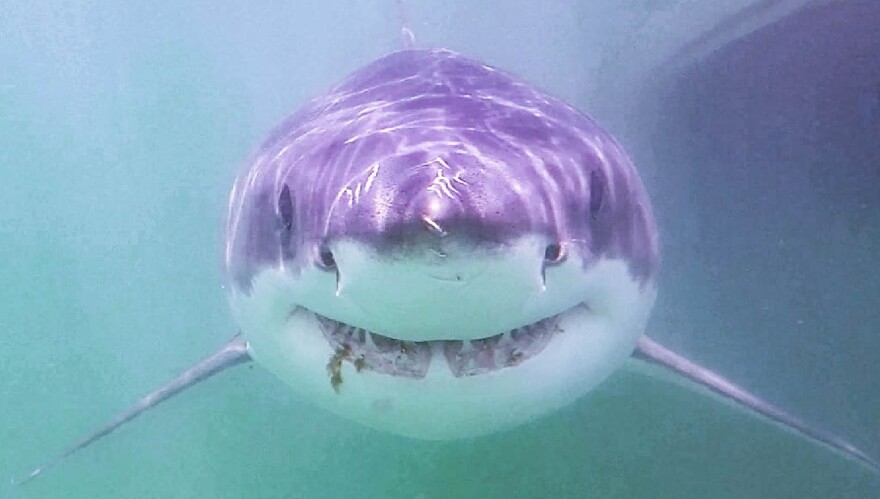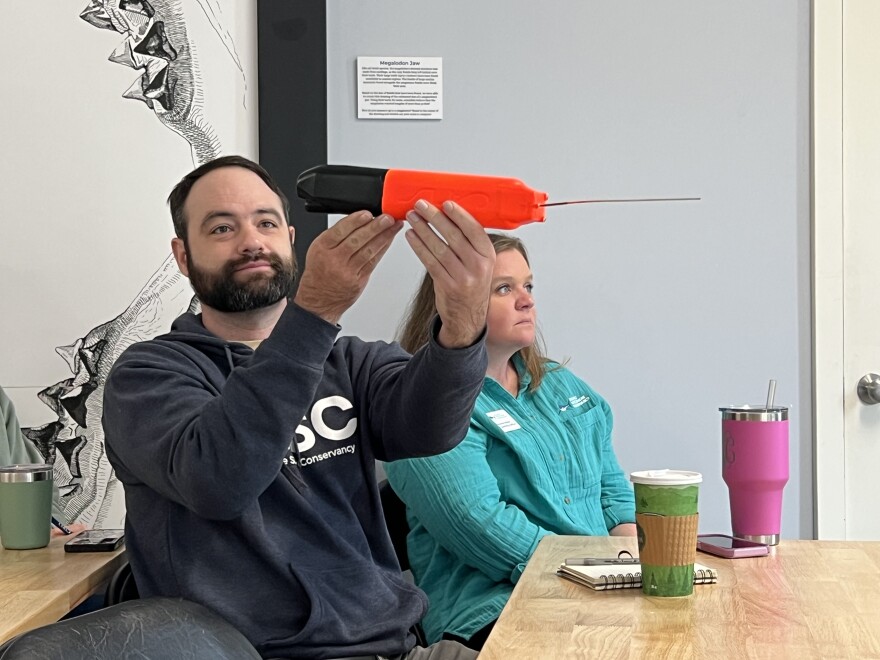From fear to fascination: That’s how humans’ view of great white sharks has evolved, scientists say, since the movie “Jaws” took the world by storm in 1975.
On Cape Cod, this 50th anniversary summer will be filled with the latest in shark research.
State shark expert Greg Skomal, a senior biologist at the Division of Marine Fisheries, works closely with the Atlantic White Shark Conservancy in Chatham. He says technologies like acoustic detection and drone cameras are showing scientists more about shark behavior than ever before.
“What's really cool is, at the time when ‘Jaws’ was made, we knew virtually nothing about the great white shark,” he said. “And in those 50 years, we've totally exploded — meaning the scientific community — what we know about this species. So it's an exciting time, because the tools that we use now didn't exist back then.”
One relatively new tool is the video tag. This year, Cape shark researchers plan to put video tags on white sharks to get a “shark’s-eye view” of shark activity inside Cape Cod Bay, rather than off the Outer Cape.
“Over the past few years, there have been increasing reports of white sharks stealing people's fish, particularly in Cape Cod Bay,” said Megan Winton, senior scientist at the Atlantic White Shark Conservancy. “So we're hoping to go out, deploy camera tags, and get a better handle on this phenomenon and what the interaction rates might be between white sharks and fishermen.”

She said the technology is great — “the latest and greatest in shark spy technology” — but using it is stressful, because scientists have to not only attach it to the shark, but also find the GPS-equipped tag in open water a few days later, after the metal link to the shark corrodes.
“We go out on this crazy scavenger hunt,” she said. “And we have to find the tag to get any data and any video footage off of it. So it's a very, like — it's a rollercoaster of emotions for a shark scientist using that technology. But it’s incredible.”
Unlike the camera tags, standard acoustic tags stay on the shark for years. Those are what scientists use to track the movement of tagged white sharks off Cape Cod.
Researchers use two types of acoustic receivers: standard, which record data that scientists retrieve at the end of the season, and the far more expensive real-time receivers, which send alerts in near-real time to public safety officials, lifeguards, and the conservancy’s Sharktivity app.
Standard receiver buoys were placed in the water from Provincetown to Orleans on Friday, Skomal said. Buoys in Cape Cod Bay and down to Monomoy should be done by the end of next week, and the five real-time receivers will likely go out in June, he said.

Only tagged sharks can be detected. For swimmers, that means knowing how to be “shark smart” remains important, scientists say.
They advise: Pay attention to lifeguards. Don’t swim in murky water, or near seals, fish, or diving birds. Those are areas where sharks could be feeding. And importantly, watch your depth in the water, because sharks hunt in shallow water.
“Of course, there are user groups like surfers, and windsurfers, and kayakers and such, that they go where they want,” Skomal said. “But for the average swimmer, we generally advise don't go in over your waist in those areas where white sharks are in great abundance.”
In Massachusetts, there are definite “hot spots” for white sharks — primarily the eastward-facing beaches of the Outer Cape and the eastern side of Cape Cod Bay, he said. “And then the number of white sharks really diminishes in other parts of the state.”
Since 2018, when a shark bite off Wellfleet killed Arthur Medici, shark scientists on the Cape have focused more on the animals’ fine-scale behavior, to learn as much as they can about when and where humans might come into contact with sharks.
“We're really getting some incredible insights into the biology and behavior of this iconic species,” Skomal said.








